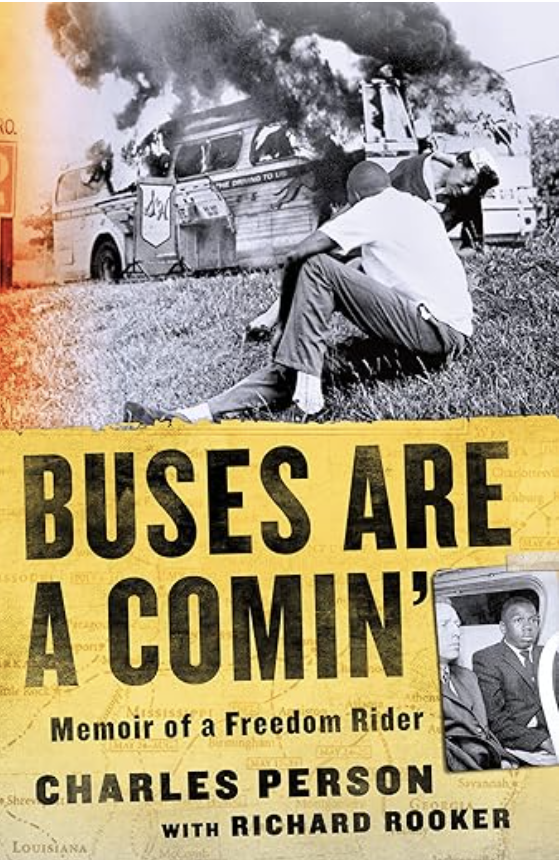The Trailways Bus Protest: The Courage of the Freedom Riders and the Violent Attack at Anniston
This breathtaking image of a memory of this event that happened in our city is such a blessing. The artwork is by Joseph Giri and funded by the City of Anniston. I was honored to be able to walk up to this monument and reflect on the words of Charles Person.
Introduction
In the spring of 1961, a brave group of activists set out on a journey that would change the course of the Civil Rights Movement. These men and women, known as the Freedom Riders, dared to challenge the entrenched system of segregation that governed the southern United States. With a simple yet powerful act of traveling together on interstate buses, black and white passengers side by side, they confronted the racial inequalities that persisted despite court rulings meant to abolish them.
One of the most violent confrontations they faced took place at the Trailways station in Anniston, Alabama. This event not only shocked the nation but also became a turning point in the movement for civil rights.
This audio recording by Charles Person’s recollection of that day. You can hear it on the video provided in the next image on this blog post.
Who Were the Freedom Riders?
The Freedom Riders were a diverse group of activists from across the United States. Organized by the Congress of Racial Equality (CORE), they were united by a shared vision: to test recent Supreme Court decisions that declared segregation in public interstate travel unconstitutional. In the south, despite these rulings, segregation was still fiercely enforced in bus stations, waiting rooms, and even restrooms. By riding buses from Washington, D.C., down to the deep south, the Freedom Riders aimed to draw attention to this unjust situation and force the government to act.
Their journey, however, was fraught with danger from the beginning. Many southern towns resisted desegregation efforts, and local authorities often turned a blind eye—or actively participated—when violence was directed at those challenging segregation.
The Attack in Anniston, Alabama
On May 14, 1961, two buses carrying the Freedom Riders left Atlanta, Georgia, bound for Birmingham, Alabama. The first bus, operated by Greyhound, was met with a vicious mob upon arriving at Anniston. A crowd of angry white men, some members of the Ku Klux Klan, surrounded the bus, shouting racial slurs and banging on its windows. The mob quickly became violent, smashing windows, slashing tires, and eventually setting the bus on fire. As flames and smoke filled the bus, the Freedom Riders barely escaped with their lives, exiting the vehicle only to be met by more hostility and violence from the waiting mob outside.
The second bus, a Trailways coach, encountered similar hostility as it entered the station. The passengers were subjected to brutal physical assaults as the mob attempted to force them off the bus. Local law enforcement either stood by or actively encouraged the violence, which was reported in media across the nation. The shocking images of the burning Greyhound bus and the battered Freedom Riders stirred national outrage and brought the harsh realities of segregation and racism into the homes of Americans everywhere.
Impact and Legacy of the Attack
The attack on the Freedom Riders in Anniston marked a turning point in the Civil Rights Movement. The violence they endured highlighted the brutal lengths to which white supremacists would go to maintain racial segregation and brought national attention to the urgent need for civil rights reforms. Following these events, more Freedom Riders joined the journey, increasing public pressure on the Kennedy administration to enforce desegregation laws.
Their courage and determination ultimately led to the Interstate Commerce Commission enforcing stricter desegregation regulations, effectively outlawing segregation in public transportation across the United States by the end of 1961. The Freedom Riders' resolve continues to inspire those who fight for justice and equality, reminding us of the power of ordinary people to enact change.
Why We Remember Anniston and the Freedom Riders Today
The events at Anniston serve as a sobering reminder of the struggles for civil rights and the violent opposition faced by those who sought equality. As we remember the Freedom Riders, we honor their bravery and commitment to justice in the face of grave danger. Their story reminds us that standing up against injustice often requires immense courage and that progress is sometimes born from the resilience of those who refuse to accept oppression.
Visiting the sites associated with the Freedom Riders or studying their history is one way to connect with this critical period in our nation’s journey toward justice. Today, markers and memorials in Anniston commemorate the sacrifices made by the Freedom Riders, keeping their legacy alive for future generations to learn from and be inspired by.
Conclusion
The Freedom Riders’ journey through the south was about more than bus rides—it was about challenging a system that denied basic human rights and dignity to an entire population. The attack at Anniston remains a powerful testament to their courage and to the brutal resistance they faced. It serves as a call to all of us to recognize the injustices that persist and to find the courage within ourselves to advocate for a fair and equitable world.









